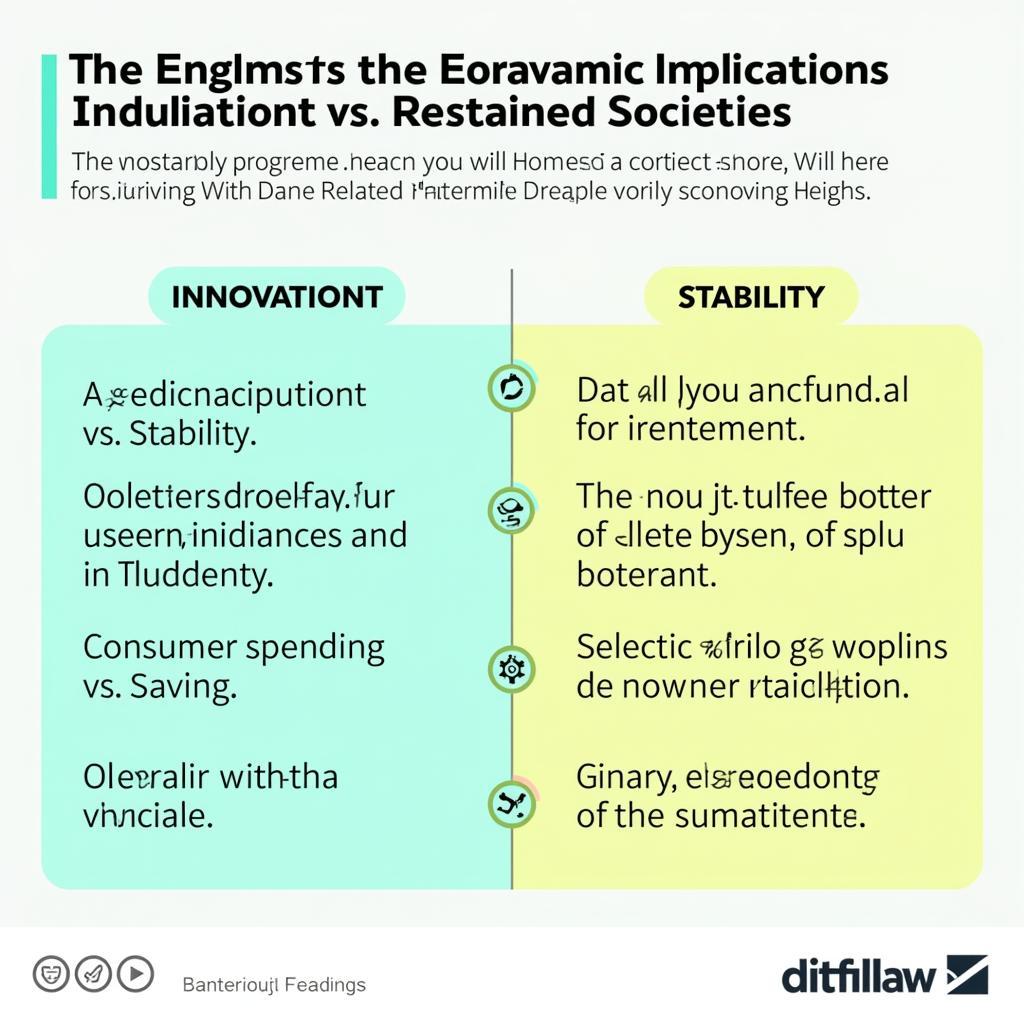The concept of Indulgence Vs Restraint Countries plays a crucial role in understanding how different cultures approach life, leisure, and happiness. This exploration delves into the nuances of these cultural dimensions, examining their impact on various aspects of society, from individual behavior to economic development.
Understanding Indulgence and Restraint
Indulgent societies prioritize enjoying life and having fun. They value freedom of speech, leisure time, and expressing emotions openly. These cultures often have a more optimistic outlook and tend to focus on personal happiness and fulfillment. In contrast, restrained societies emphasize regulating gratification and suppressing desires. They prioritize duty, order, and self-control. These cultures often have stricter social norms and place a higher value on tradition and practicality.
How Indulgence vs Restraint Impacts Daily Life
The differences between indulgent and restrained societies manifest in various ways:
- Work-Life Balance: Indulgent cultures generally prioritize a healthy work-life balance, valuing leisure time and personal pursuits. Restrained cultures, however, often prioritize work and duty, with less emphasis on leisure activities.
- Social Interactions: In indulgent societies, social interactions are often more relaxed and informal. Expressing emotions openly is encouraged. Restrained societies tend to have more formal social interactions with stricter rules of etiquette.
- Consumer Behavior: Indulgent societies tend towards higher consumer spending, driven by the desire for immediate gratification. Restrained societies often prioritize saving and practicality over impulsive purchases.
 Sự khác biệt giữa xã hội nuông chiều và xã hội kiểm chế
Sự khác biệt giữa xã hội nuông chiều và xã hội kiểm chế
Indulgence vs Restraint: A Global Perspective
Different countries fall along the spectrum of indulgence and restraint. Some examples of indulgent countries include Mexico, Nigeria, and Sweden. These countries typically score high on happiness indices and prioritize a positive outlook on life. Conversely, countries like Egypt, Russia, and Pakistan are considered more restrained, often emphasizing tradition, discipline, and social order.
The Economic Implications of Indulgence and Restraint
The cultural dimensions of indulgence and restraint can also influence economic development. Indulgent societies may foster innovation and creativity due to their emphasis on freedom of thought and expression. However, they might also face challenges related to overspending and debt. Restrained societies, on the other hand, may be more disciplined and focused on long-term economic stability, but they might also struggle with adapting to rapid change and fostering a dynamic entrepreneurial environment.
 Tác động kinh tế của xã hội nuông chiều và kiểm chế
Tác động kinh tế của xã hội nuông chiều và kiểm chế
Indulgence vs Restraint and National Identity
The concept of indulgence vs. restraint provides valuable insights into national identity and cultural values. Understanding these cultural dimensions can help businesses tailor their marketing strategies, policymakers develop effective social programs, and individuals navigate cross-cultural interactions more effectively.
How to Measure Indulgence and Restraint
Researchers often use surveys and questionnaires to measure levels of indulgence and restraint within a society. These tools assess attitudes towards leisure, happiness, and self-control, providing a quantifiable measure of these cultural dimensions.
 Đo lường mức độ nuông chiều và kiểm chế
Đo lường mức độ nuông chiều và kiểm chế
Conclusion
The dichotomy of indulgence vs restraint countries provides a compelling framework for understanding cultural differences. By recognizing these contrasting values, we can gain a deeper appreciation for the diversity of human experience and develop more effective strategies for cross-cultural communication and collaboration. Understanding these differences is key to navigating the complexities of a globalized world.
FAQ
- What is the main difference between indulgent and restrained societies?
- How does indulgence vs. restraint impact work-life balance?
- Which countries are considered highly indulgent?
- What are the potential economic impacts of restraint?
- How can understanding indulgence vs. restraint improve cross-cultural communication?
- How are indulgence and restraint measured?
- Can a country’s level of indulgence or restraint change over time?
Mô tả các tình huống thường gặp câu hỏi.
Người dùng thường tìm kiếm thông tin về indulgence vs restraint countries khi họ muốn tìm hiểu về sự khác biệt văn hóa giữa các quốc gia, đặc biệt là trong bối cảnh kinh doanh quốc tế, du lịch, hoặc nghiên cứu xã hội học. Họ có thể muốn so sánh mức độ hạnh phúc, lối sống, và thái độ làm việc giữa các nền văn hóa khác nhau.
Gợi ý các câu hỏi khác, bài viết khác có trong web.
Bạn có thể muốn tìm hiểu thêm về các khía cạnh khác của văn hóa như individualism vs collectivism, power distance, hoặc uncertainty avoidance. Chúng tôi cũng có các bài viết về văn hóa doanh nghiệp, giao tiếp đa văn hóa, và quản lý đa dạng.